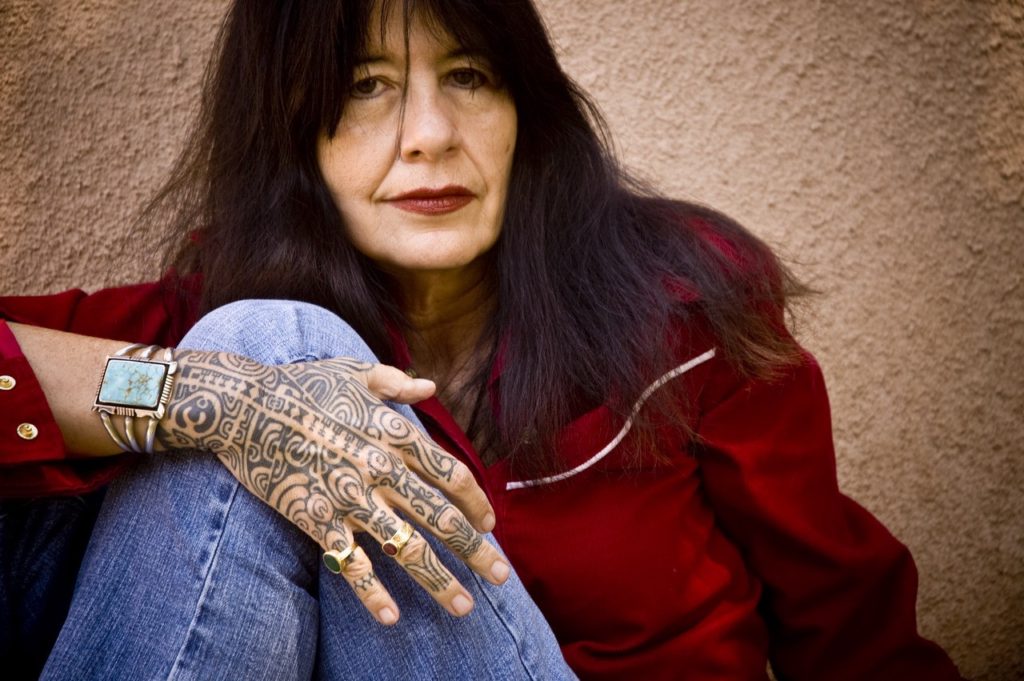
About the Author: Joy Harjo was born in Tulsa, Oklahoma and is a member of the Mvskoke (MuscogeeCreek) Nation. Her seven books of poetry, which includes such well-known titles as How We Became Human: New and Selected Poems, The Woman Who Fell From the Sky, and She Had Some Horses have garnered many awards. These include the New Mexico Governor’s Award for Excellence in the Arts, the Lifetime Achievement Award from the Native Writers Circle of the Americas; and the William Carlos Williams Award from the Poetry Society of America. Harjo’s memoir, Crazy Brave, won the PEN USA Literary Award for Creative Non-Fiction and the American Book Award, among others. In 2014 she was inducted into the Oklahoma Hall of Fame. A noted teacher, saxophonist and vocalist, Harjo has several musical CDs and performs her sax solo and with her band, the Arrow Dynamics. Harjo is currently Professor and Chair of Excellence in Creative Writing at the University of Tennessee, Knoxville.
Find Joy Harjo on the following platforms:
Joy Harjo: My approach to poetry varies, but it always involves rhythm, married with sound and meaning sources and inspiration. Each poem is different in its conception. The Good Luck Cat was my first picture book. The impulse was more narrative. My original impulse for writing that book was to make a story to help the young niece and nephew of band members to cope with the death of their pet cat. I just couldn’t kill off the cat in the story to fit the intent! And, as stories and poems do, they find their own direction. For a Girl Becoming had a very different intent. It is an illustrated poem. The poem was written for the coming-of-age for my oldest grandchild, a granddaughter. It was written for a family event, not with publishing in mind. I wrote it as a blessing poem, to remind her who she is, where she comes from, and how we will always be with her.
JH: I have found, especially after publishing my memoir Crazy Brave, that almost any other literary genre gets more attention than poetry. That includes attention from the press, from publicity at the press, and for distribution. The audiences are usually much larger. The one issue that’s different is that picture books involve an illustrator. My publisher let me pick the illustrator for The Good Luck Cat. This, I later learned, was highly irregular, as major presses usually pair the artist with the story. My choice of artist did not turn out well. The artist had never illustrated a children’s book and did not deliver on time. When he did turn in art, two years after the due date, it was not the kind of art we contracted him for, rather skimpy sketches. The press then found Paul Lee, who did a beautiful job of illustration. Mercedes McDonald illustrated For a Girl Becoming. She was suggested by the press. I worked closely with her and we talked concepts and ideas. Her art perfectly complemented the story. I would love to do another book with her.
CL: How has your music affected your writing or vice versa?
JH: I get asked this question frequently. I don’t know how exactly it does—I see them as intertwined. I believe that music, poetry, and dance came into the world together. Though music is a totally different discipline, I imagine the music and literary demands as one, all working together.
PRR Writer, Cheyenne Lopex